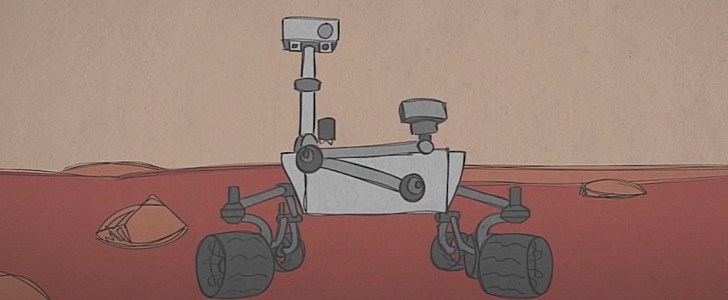Back in 1997, which is not all that long ago, if you really think about it, the Mars Pathfinder mission reached Mars. It comprised a lander, and the “first-ever robotic rover” to be sent there.
Since that time, the fleet of wheeled contraptions that have landed on the Red Planet reached five, with the youngest of the bunch, the Perseverance, having arrived in 2021. By now, pretty much all of us here on Earth with the slightest interest in space exploration have a decent idea of how these things are commanded to move on the surface of the alien world.
But, to make sure there’s no misunderstanding, given how in the coming years will get more and more Mars missions, until eventually humans land there, we thought of using a short video put together by NASA’s JPL some years ago, and perfect for the job.
Titled How Do Rovers Drive on Mars? and part of the Mars in a Minute series, the clip describes how easy it is, at least in theory, to drive something that is located millions of miles away from where you are.
Unlike most other machines made by humans, rovers are not controlled remotely by means of steering wheels, or joysticks. All a rover driver needs is a keyboard, a computer attached to it, and a clear line of sight to Mars, so that the message can go through.
NASA generally has two ways of driving rovers on Mars. The first would be to tell them directly and precisely what to do, something like “drive for this long, then turn at this angle.” A second, a bit more hands-off, sets a target destination for the rover and lets it decide on the course to take to reach it, using cameras and whatever other sensors it may have to get its bearings.
But, to make sure there’s no misunderstanding, given how in the coming years will get more and more Mars missions, until eventually humans land there, we thought of using a short video put together by NASA’s JPL some years ago, and perfect for the job.
Titled How Do Rovers Drive on Mars? and part of the Mars in a Minute series, the clip describes how easy it is, at least in theory, to drive something that is located millions of miles away from where you are.
Unlike most other machines made by humans, rovers are not controlled remotely by means of steering wheels, or joysticks. All a rover driver needs is a keyboard, a computer attached to it, and a clear line of sight to Mars, so that the message can go through.
NASA generally has two ways of driving rovers on Mars. The first would be to tell them directly and precisely what to do, something like “drive for this long, then turn at this angle.” A second, a bit more hands-off, sets a target destination for the rover and lets it decide on the course to take to reach it, using cameras and whatever other sensors it may have to get its bearings.









